Unlike other traditional villages with typical houses in rural areas, Cuu Village in Van Tu Commune, Phu Xuyen District, Hanoi is famous for dozens of luxurious villas with French architecture built in the early 20th century.
The gate of the village is delicate. It has stairs, floors and a roof. Standing at the top of the gate and looking out, people can see dozens of old villas scattered throughout.
These spacious villas show what the village looked like during prosperous times. In the past it had sunken rice-fields which grew only one crop a year, so life for the villagers was very difficult. In 1921 a fire destroyed half the village. Many farmers left the village to go to different parts of the country to earn their living. Some of them became wealthy tailors. Phuc My and his brother, Phuc Hung were the first Cuu villagers to become tailors and were known as the top tailors in Hanoi. With skilled hands they made fashionable suits and dresses for the French and wealthy people in Hanoi. Soon the Cuu villagers were known for their craft of making clothes for western people. Many of them did a good business and became rich. They returned to their native village to build large houses.
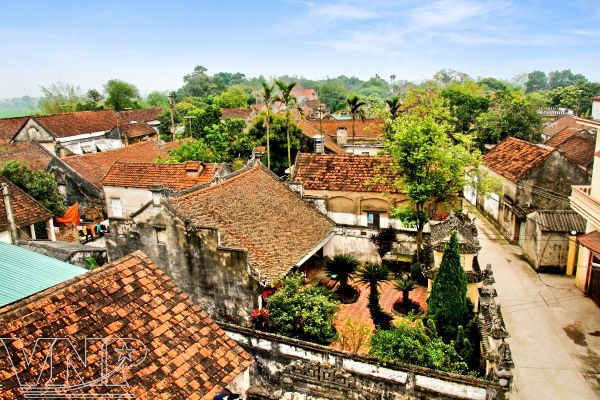
A part of Cuu Village today.
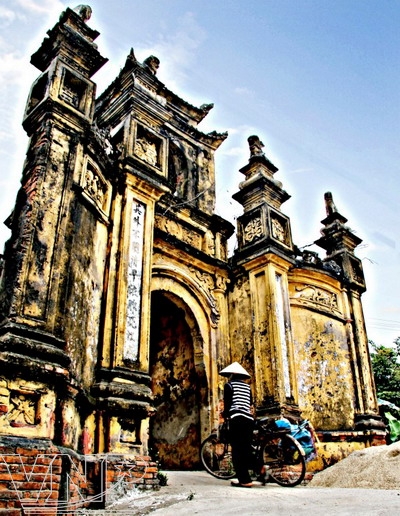
The moss-covered gate of Cuu Village.
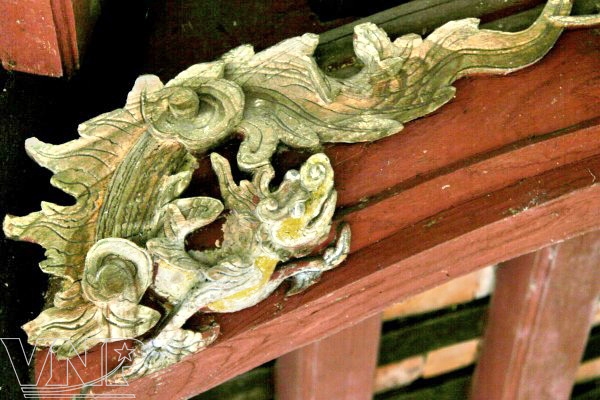
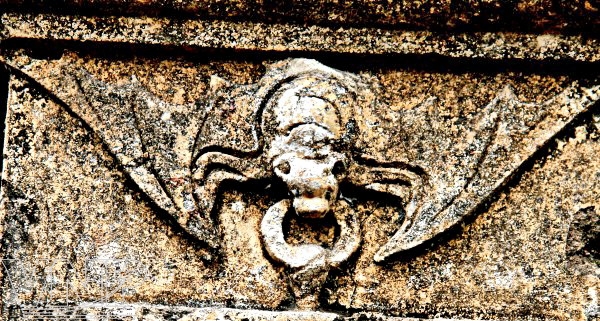
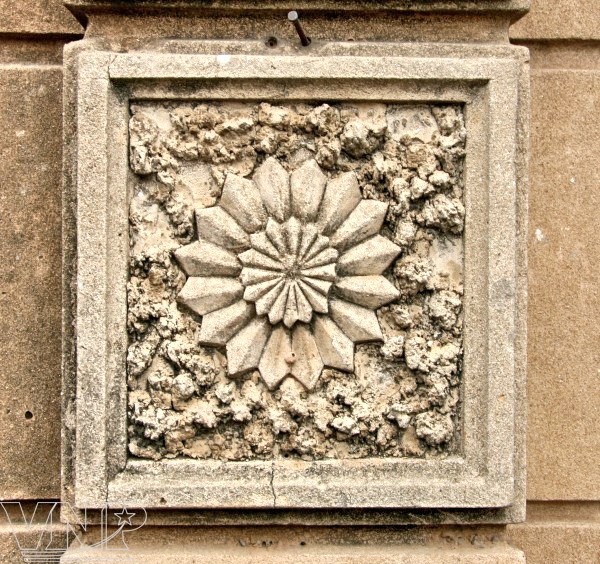
Some decorative patterns on the old villas in Cuu Village.
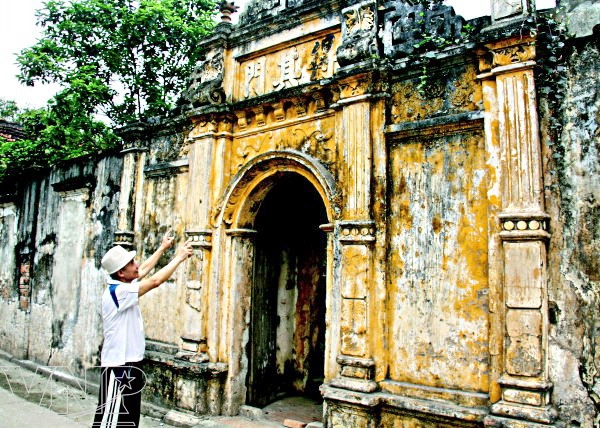
The gate of the ancestral worshipping house of the Tran Family in Cuu Village.

The old house owned by Du was built in 1929 with decorative patterns using a western architectural style.
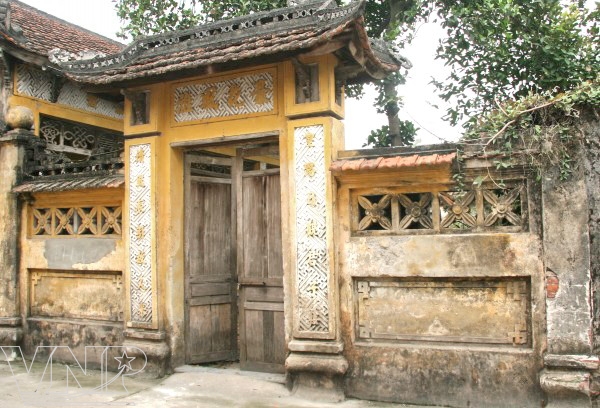
A gate with occidental and oriental architectural styles.
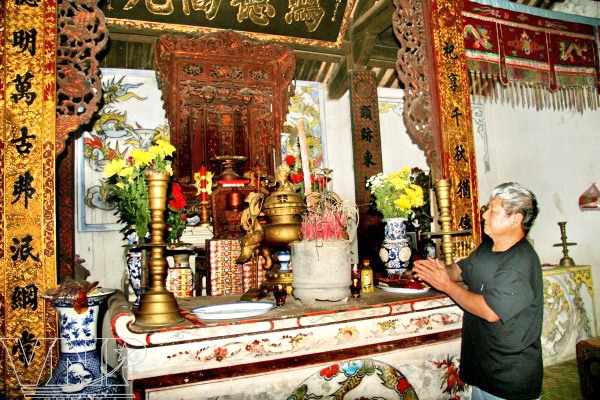
The altar of a family in Cuu Village.
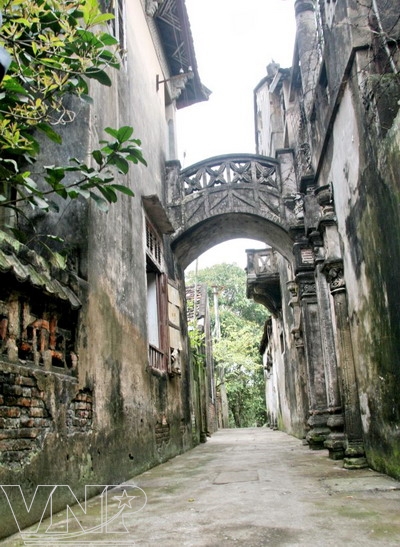
A small bridge linking the two houses of Vinh. |
At that time French architecture was popular in the large cities, such as Hanoi and Hai Phong. The villagers incorporated this style into their own dwellings. Many of their houses had the appearance of French villas.
The house of Du, built in 1929, was among the first houses of French architecture. It was known for a beautiful, embossed shrimp on the front of the gate. The house of Vinh was famous for its delicate architecture. Its lane was large and paved with green stone blocks. The gate was decorated with beautiful pictures of natural landscapes featuring peach blossom and cholorantus flowers, lobsters, unicorns, phoenix’ and couplets in Chinese scripts. There was a small curved bridge linking the upper floors of the two blocks of houses. Even the worshipping house dedicated to the Tran family which was built in pure Vietnamese style bears occidental features which are shown in its great size and scale.
All the villas usually hung lacquered boards engraved with Chinese scripts and couplets. Above the door there was an embossed letter with a sword and a pen brush on both sides. It is interesting that the architectural style and the ways of decorating the villas show the specific personality of each family or clan. According to the village elders, in the past wealthy people in the village were very finicky about building their houses. For some villas, it took craftsmen a year to carve the doors.
Visitors to Cuu Village enjoy walking along the lanes paved with bricks and visiting the old villas which are reminiscent of the peaceful atmosphere of an affluent village in the past.
Today, the old villas and lanes paved with green stone blocks in Cuu Village still remain. Although these villas are covered in moss they still retain their beauty. Visiting this village people can imagine the flourishing period of the village shown in the delicate features of the old villas.
Story: Vinh Hung - Photos: Trinh Van Bo
Story: Vinh Hung - Photos: Trinh Van Bo